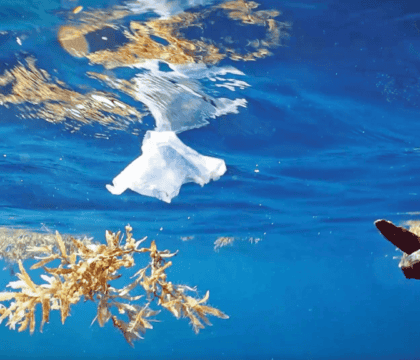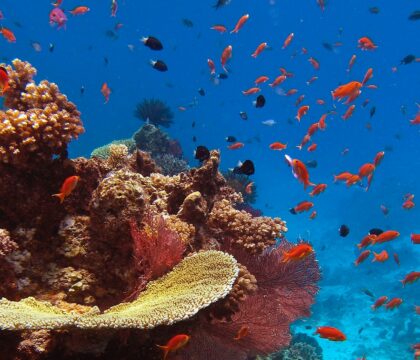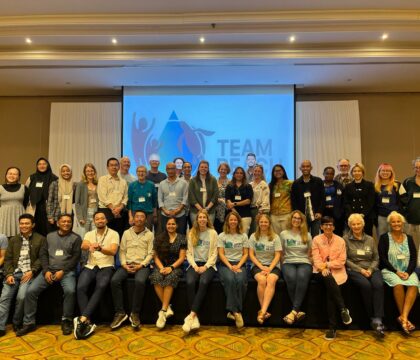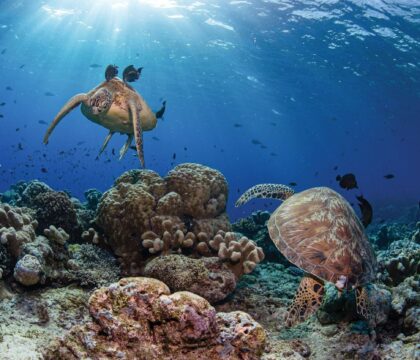August 13, 2021 • Blue Habits Tips, Resources
Making responsible seafood choices is one of the most important ways that you can contribute to healthier oceans. Thankfully, there is growing consumer demand for seafood that is both ethical and sustainable. An increasing number of people want to ensure they are making responsible decisions when it comes to their seafood choices, and more than 80% of global seafood consumers believe it is important for seafood to be protected for future generations. The challenge is that the path to making sustainable seafood choices is not a clear one.
There are many problems associated with the fishing industry, including overfishing, habitat destruction, bycatch, fish fraud, and even slavery. But most importantly, seafood species are being extracted from the oceans faster than wild populations can replenish. Currently, 93% of wild fish populations are considered fully-fished or overfished. Some fishing methods, like trawling, can also cause enormous collateral damage and irreversible harm to ocean habitats. Bycatch, or catching wildlife that is not the target species, is another serious concern. Bycatch, which is commonly discarded, can include other vast amounts of non-commercial fish species, including sea turtles, sharks, seabirds, and marine mammals like dolphins and seals. Fish fraud is another concern facing seafood consumers. In one study, 21% of seafood that was sampled in U.S. stores and restaurants was mislabeled. For example, an item labeled as sea bass, snapper, or caviar might be something entirely different! Finally, parts of the fishing industry are susceptible to slavery and forced labor. While these impacts are daunting to consider, they underscore the importance of making educated choices when it comes to seafood.
Sign-up for more #BlueHabits Tips
Be a part of the global movement to improve ocean health.
Get free tips and tools to help you live an ocean-friendly lifestyle.
As consumers and ocean lovers, what are the best options? In this guide, we aim to answer some of your top questions about choosing sustainable seafood, and suggest some actionable tips to help you navigate these complex issues.
What is sustainable seafood?
Sustainable seafood is seafood that is caught or farmed (also called aquaculture) with minimal environmental and social impacts. When done correctly, sustainable seafood sourcing prevents overfishing, minimizes incidental impacts to other ocean wildlife and habitats, identifies and protects essential fish habitats, and takes into account the social and economic impacts on the communities from which the seafood is sourced.
How do I know if my seafood is sustainable?
The first step is to identify the source. Choosing what to eat depends on many factors, including how and where the seafood was caught. Some restaurants, markets, and seafood companies have made sustainability part of their operations and will advertise where their seafood is from and whether it has any sustainability certifications, but many places do not. Even if it makes you uncomfortable or seems like an inconvenience, it is critical that you ask questions about where your seafood comes from. Asking questions tells the restaurant or store that their customers care about how their seafood is sourced. If the waiter, grocer, or company doesn’t know their supply chain, the safest option is to avoid purchasing seafood there. Ideally, your questions will spark a bigger conversation and help push them in the direction of understanding where their products come from.
Okay, I know where my seafood comes from and how it was sourced, now what? There are organizations around the world that are dedicated to studying and promoting sustainable fisheries, and some have made seafood guides to help consumers make wiser choices. Once you know about the source of the seafood you can use one of the guides listed below to determine if it is sustainable. Because there is always new information about seafood sustainability, it is not possible to have an all-encompassing “master list” of the best seafood choices to make. Following guides and asking questions about seafood sustainability may seem tedious, but your choices can make an enormous difference for ocean health.
Wait… why is there more than one seafood guide?
There are multiple guides and resources that identify seafood as sustainable (or not) because even though they are all working towards the same goal, they have different ideas about the best way to achieve it. You will also find that some of the guides listed below are region-specific because different countries, states, and regions will offer different types of seafood depending on cultural and social tastes and preferences. We encourage you to look at the different guides and resources to figure out which one aligns best with your views and beliefs.
- Monterey Bay Aquarium Seafood Watch (This guide has a mobile app)
- Ocean Wise
- Audubon G.U.L.F. (This guide is specific to the Gulf of Mexico region and has a mobile app)
- EDF Seafood Selector
- WWF Seafood Guides (WWF has multiple guides that are specific to different regions)
What other ways can I reduce my impacts when eating seafood?
When considering sustainability, it is important to consider the carbon footprint of seafood. The seafood industry in general has a substantial carbon footprint. Transportation on boats, planes, and delivery trucks, processing and packaging, and refrigeration all contribute to seafood’s carbon footprint. When you buy local seafood caught with sustainable methods at markets, the carbon footprint can be greatly reduced. Local seafood has the added benefit of supporting local businesses, and in some places you can buy the seafood directly from the fishermen who caught it!
Another way to reduce the impact of your seafood choices is to choose seafood species that are lower on the food chain, like oysters and mussels, which tend to be better options for a variety of reasons. One reason is that these animals are a primary food source for other animals, and so they reproduce faster than predatory species like tuna. Other options that are low on the food chain like domestic tilapia and catfish, clams, and sea urchins tend to hit most of the boxes on the sustainability checklist.
Is there any seafood should I avoid entirely?
The short answer is “yes,” there are a number of seafood options that you should always avoid. These options include bluefin tuna, Atlantic halibut, eel, orange roughy, most imported shrimp, Chilean sea bass, and many more. These are bad choices that are either heavily overfished, slow to grow and reproduce, environmentally destructive to raise or capture, or all of the above. It is therefore a good idea to familiarize yourself with a handful of sustainable seafood options that you like to eat, and stick to those whenever you are in doubt. If your favorite fish is listed under a do not eat category, you can find an alternative that is better for the environment using this handy guide.
Should I be eating seafood at all?
Given the many environmental and societal issues surrounding fishing and aquaculture and the challenge of identifying sustainable seafood options, the question of whether to eat seafood at all is an important one to ask. While some communities rely on seafood for protein, many individuals have the privilege of choosing to eat seafood. Numerous ocean experts, including renowned ocean explorer and Oceanic Society board member Dr. Sylvia Earle, advocates for giving the oceans a break by avoiding seafood altogether. Dr. Earle eschews the use of the word “seafood,” instead referring to it as “wildlife.” It is important to remember that wild-caught seafood – wildlife – is also part of the natural food chain, and overfishing can negatively impact both predators and prey populations. Wild-caught seafood can run the risk of being fished to extinction, and its industrial scale removal from ocean ecosystems has cascading and negative impacts on overall ocean health. Avoiding seafood is the only absolute, surefire way to avoid negatively impacting ocean health through your seafood choices.
Do I as an individual really make a difference?
Individual decisions DO make a big difference. The marketplace for sustainable seafood has grown significantly in the past 20 years simply because it has evolved to match the demands of individual consumers. The best thing you can possibly do is ask questions. Ask your local grocer, “Do you sell sustainable seafood?” and inquire about their selection criteria. Or, “Where is this salmon from? How was it caught or raised? Does it have any sustainability certifications?” Even if they do not have an immediate answer, the simple act of asking shows them that their customers care, and will continue to help shape the supply and demand of seafood that meets the right standards.
Join #BlueHabits Community
Be a part of the global movement to improve ocean health.




